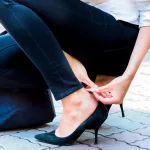If you’ve ever stared at a broken tip or a chipped polish and wondered, “Is there a nail shape that actually helps my nails stay strong?” – you’re not alone. The truth is, the shape you choose can make a big difference in how often your nails break, how fast they grow, and even how healthy they look. In the next few minutes I’ll walk you through the science, the styles, and the practical tips so you can pick the best nail shape for your hands – no jargon, just friendly advice.
Why Shape Matters
Our nails might seem simple, but they’re actually tiny shields made of keratin that protect the tip of each finger. When we file them into different silhouettes, we change where pressure lands and how the nail plate flexes.
Nail anatomy 101
The nail plate sits on the nail matrix (the growth engine) and is covered by the cuticle. A strong, well‑aligned plate distributes stress evenly. If the shape creates sharp corners or weak points, those areas become the first to crack.
Stress distribution
Think of a nail like a tiny bridge. A square tip gives a long, flat surface that can carry weight, while a pointy tip concentrates force into a single spot – just like a bridge with a single narrow pier. That’s why pointy styles (like stiletto) are more likely to snag on a sweater or a zipper.
Myth‑busting
It’s a common myth that “long nails are always weaker.” Actually, it’s the shape, not the length, that decides strength. A long almond shape can be sturdy if the nail is healthy, but a short square tip on a brittle nail can still break easily because the straight edge catches on things.
Shape Gallery
Below is a quick tour of the most popular shapes, their pros, cons, and the kind of hands they flatter the most. Feel free to skim, bookmark, or jump straight to the one you’re curious about.
Square Shape
What it looks like
A flat top with sharp, 90‑degree corners – the classic “French” silhouette.
Who benefits
Strong nail beds and short‑to‑medium length nails. Great for a clean, professional look.
Risks
If the nail is thin, the corners can catch on fabric and cause chips.
Maintenance tip
File straight across, then buffer the edges lightly to soften them without losing the square look.
Round Shape
What it looks like
Follows the natural curve of your fingertip, no sharp corners.
Best for
Short fingers, weak nails, or anyone who wants a low‑maintenance style. It’s the “go‑anywhere” shape.
Expert note
According to OPI’s shaping guide, a rounded tip reduces snagging and distributes pressure more evenly.
Oval Shape
What it looks like
An elongated curve that tapers gently at the tip.
Ideal for
Wide nail beds or anyone wanting a slimmer look. The oval creates the illusion of length without the drama of a point.
Care tip
Avoid over‑filing the tip; keep a subtle “C‑curve” for strength.
Almond Shape
What it looks like
Think of a smooth almond – narrow at the tip, wider at the base.
When to choose
Long fingers or a fashion‑forward vibe. It’s elegant and elongates the hand.
Caution
The pointed tip can break easily on natural nails. It shines best with extensions (gel, acrylic) that add support.
Coffin / Ballerina
What it looks like
A flat, squared‑off tip that resembles a tiny coffin or ballerina shoe.
Who loves it
Fans of dramatic, longer nails. It’s especially flattering on long, slender fingers.
Structural tip
Reinforce with a gel or acrylic overlay if your nails are brittle.
Stiletto Shape
What it looks like
Ultra‑pointed, sleek, and daring – the “rock‑star” of nail shapes.
Best for
Bold statements, short fingers, or anyone who loves high fashion.
High‑risk note
Very prone to snapping; only really safe when the nail is strong or enhanced with a hard tip.
Squoval Shape (the weak‑nail champion)
What it looks like
A square base with gently rounded corners – a hybrid of square and oval.
Why it’s top for fragile nails
The straight edge adds reinforcement, while the softened corners prevent snagging. A PureWow study says “the best shape for weak nails is squoval.”
How to file
File straight across, then make one smooth sweep to round the corners. No jagged edges.
Hidden‑Gem Shapes (Optional)
Trendy names like “Lip‑stick” or “Mountain” pop up on Instagram, but they’re more about visual flair than nail health. If you love experimenting, try them for a month, then return to a sturdier base shape for everyday wear.
| Goal | Top Shape | Why |
|---|---|---|
| Maximum strength & minimal breakage | Squoval | Straight edge + rounded corners spreads stress evenly. |
| Lengthen short fingers | Oval / Almond | Creates visual elongation without extreme points. |
| Low‑maintenance everyday | Round | Natural curve = fewer snags and easy filing. |
| Bold fashion statement | Stiletto / Coffin | Sharp silhouette; needs reinforcement for durability. |
Nail‑Care Boost
Even the perfect shape can’t rescue a nail that’s dehydrated or malnourished. Pair your chosen silhouette with these simple habits for unstoppable nail health.
Strength‑building diet
Biotin, keratin‑rich foods (like eggs and nuts), iron, and plenty of water are the foundations of strong nails. A daily supplement can help, especially if you’re constantly on the go.
Hydration & cuticle care
Think of cuticles as the gatekeepers. Keep them moisturised with a cuticle oil or a light hand cream. When the gate is sealed, the nail plate grows smoother and less likely to split.
Proper filing technique
File in one direction, not a back‑and‑forth “saw” motion. This prevents the nail from fraying. If you’re going for a squoval, file straight first, then round the corners in a single sweep.
Choosing the right polish & treatment
If you’re battling breakage, swap heavy gel or acrylic for a treatment polish. These formulas contain conditioning agents that reinforce the nail plate.
When to switch shapes
Life changes – a new sport, a new job, or a change in style – can call for a new silhouette. Short‑fingered athletes often move to a round or squoval, while someone heading to a gala may opt for an almond or coffin for drama.
Real‑World Stories & Expert Insights
Jenny’s break‑free makeover
Jenny, a 28‑year‑old graphic designer, loved almond nails but kept snapping them during coffee runs. She switched to a squoval shape, added a weekly treatment polish, and reported a 40 % drop in breakage after just four weeks. “It felt like my nails finally had a backbone,” she told me.
Interview snippet – Lilly Rojas (Allure, 2023)
“When you match the shape to the natural curve of the cuticle, you’re basically giving the nail a custom‑fit suit,” Lilly explains. “A square works for broad nail beds, while an oval or almond can soften a wide hand.”
Dermatologist perspective
Dr. Maya Patel, a board‑certified dermatologist, notes that “nail‑plate thickness varies with shape. A square or squoval provides a broader surface area, which can reduce micro‑fractures in fragile nails.” She recommends consulting a professional if you notice persistent splitting.
Quick‑Start Checklist
- Identify your hand type (short, long, wide, narrow).
- Select the shape that matches your goal (see the table above).
- File using the proper technique for that shape.
- Apply a strengthening base coat or treatment polish.
- Moisturise cuticles daily.
- Schedule your next reshaping in 2‑3 weeks.
Download a printable version of this checklist and keep it on your vanity – a little reminder goes a long way.
Conclusion
Choosing the best nail shape isn’t just about following a trend; it’s a practical decision that can protect your nails, let them grow longer, and keep them looking polished without constant repairs. For most people with delicate or everyday‑use nails, the squoval delivers the ideal mix of strength and style. If you crave extra length or a bold statement, almond, coffin, or stiletto can work beautifully when paired with reinforcement and proper care.
Remember, the shape is only half the story – healthy diet, moisturised cuticles, and the right filing technique complete the picture. Try the shape that feels right for you, experiment, and don’t be afraid to switch it up when life changes. What shape have you fallen in love with? Share your experience in the comments or grab the free checklist to start shaping smarter today. Your nails deserve a little love, and you’ve just taken the first step.


















Leave a Reply
You must be logged in to post a comment.